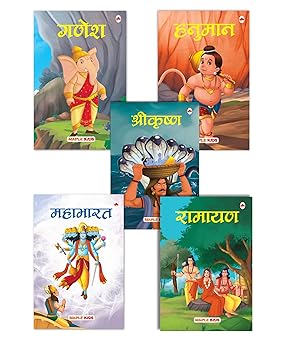આસમાની
રંગની ચૂંદડી રે, ચૂંદડી રે,
માની ચૂંદડી
લહેરાય
ચૂંદડીમાં
ચમકે ચાંદલા રે, ચાંદલા રે,
માની
ચૂંદડી લહેરાય…
નવરંગે
રંગી ચૂંદડી રે, ચૂંદડી રે,
માની
ચૂંદડી લહેરાય
ચૂંદડીમાં
ચમકે હીરલા રે, હીરલા રે,
માની
ચૂંદડી લહેરાય…
શોભે
મજાની ચૂંદડી રે, ચૂંદડી રે,
માની
ચૂંદડી લહેરાય
ચૂંદડીમાં
ચમકે મુખડું રે, મુખડું રે,
માની
ચૂંદડી લહેરાય…
અંગે
દીપે છે ચૂંદડી રે, ચૂંદડી રે,
માની
ચૂંદડી લહેરાય
પહેરી
ફરે ફેર ફૂદડી રે, ફેર ફૂદડી રે,
માની
ચૂંદડી લહેરાય…
લહરે
પવન ઊડે ચૂંદડી રે, ચૂંદડી રે,
માની
ચૂંદડી લહેરાય
આસમાની
રંગની ચૂંદડી રે, ચૂંદડી રે,
માની
ચૂંદડી લહેરાય…
Overview of “Aasmana Rang Ni Chundadi”
Title & Meaning
“Aasmana Rang Ni Chundadi” roughly means “The sky-colored veil/ scarf”. The song evokes imagery of a beautiful chundadi (veil) fluttering like a part of the heavens.
Origin & Traditional Usage
This Garba is a Navratri devotional folk song that has been sung widely in Gujarat; it is performed in Garba circles, festivals, and devotional gatherings.
Language & Dialect Influence
Lyrics are in Gujarati, using poetic imagery, repetition, and local metaphors like “chundadi”, “tārlaa” (stars) that resonate with Gujarati listeners. :contentReference[oaicite:0]{index=0}
When & Occasion
The song is typically sung during Navratri nights in Garba events, especially in the early evenings when people begin dancing, lighting is decorative, and devotion begins to build.
Popularity & Artists
Popular versions include those by Khushbu Panchal, Jignesh Kaviraj, Jalpa Dave, etc. It is available on Spotify, YouTube, and many Garba lyric sites. :contentReference[oaicite:1]{index=1}
Lyrics Structure & Themes
Refrain & Chorus
The repeated refrain “Aasmana Rang Ni Chundadi Re” anchors the song and allows the audience to join in, especially in Garba dance circles. It creates a sense of familiarity and participation. :contentReference[oaicite:2]{index=2}
Imagery of Stars & Light
Lines like “Chundari maa chare chare taarlaa re” evoke starry light and heavenly veil imagery that connect the earthly garment (chundadi) with celestial beauty. :contentReference[oaicite:3]{index=3}
Adornments & Beauty
The song talks about the veil, glittering threads, stars, and how the chundadi shines under moonlight — all metaphors for beauty. :contentReference[oaicite:4]{index=4}
Emotion & Yearning
There is a mood of longing and admiration — the singer or devotee wanting to see the Mother, and feeling that divine presence through these beautiful images.
Repetition & Rhythm for Dance
Repetition of key lines supports Garba’s rhythmic dance; dancers can predict verses and responses, making it easy to step in rhythm.
Musical & Performance Elements
Melody & Tune Style
The melody is soft and folk-oriented with lilting tune in verses and stronger chorus, fitting Garba’s alternating calm and energetic movements.
Instrumentation
Traditional folk instruments like manjira (cymbals), dhol, and maybe harmonium accompany the vocals. The chundadi phrases are emphasized with lighter percussion.
Tempo Progression
Starts gently, building tempo especially during chorus parts (“chundadi maa chamke taarlaa re”) to match the energy of group dancing.
Live vs Recorded Versions
Live Garba events usually extend verses, encourage audience echo, and may include improvisation; studio recordings are more polished and timed.
Audience Engagement
Crowd participation is high in chorus sections; singers often pause to let audience echo; dancers align movements with repeating chundadi imagery.
Festival & Cultural Significance
Navratri Tradition
This song is deeply associated with Navratri; singing it reaffirms devotion to the Goddess, cultural heritage, and community spirituality.
Community Bonding
Garba nights where this song is sung bring neighbours, friends, and extended families together, strengthening social ties and shared heritage.
Preserving Oral & Folk Heritage
Songs like this preserve Gujarati folk songs, local dialects, pronunciation, and lyrical motifs across generations.
Emotional Upliftment
Listeners and dancers feel joy, nostalgia, spiritual peace, and aesthetic pleasure when this song is performed in Garba settings.
How to Use & Share
Lyrics Translation & Transliteration
Providing Gujarati lyrics along with transliteration and/or English translation helps people who do not speak Gujarati understand and enjoy the beauty of this song.
Audio / Video Embeds
Embedding official audio or a lyrical video (YouTube/Spotify) encourages visitors to listen and dance along, increasing time on page and engagement.
Printable Lyrics / PDF Downloads
Allowing a downloadable or printable copy of the lyrics helps devotees who wish to carry or practice offline.
Performance Tips for Garba Events
Suggest when to use this song in a Garba playlist (early, mid, peak), how to direct chorus, how to match dance movements to lyrical cues like “chundadi maa chamke taarlaa re”.
“Aasmana Rang Ni Chundadi” roughly means “The sky-colored veil/ scarf”. The song evokes imagery of a beautiful chundadi (veil) fluttering like a part of the heavens.
This Garba is a Navratri devotional folk song that has been sung widely in Gujarat; it is performed in Garba circles, festivals, and devotional gatherings.
Lyrics are in Gujarati, using poetic imagery, repetition, and local metaphors like “chundadi”, “tārlaa” (stars) that resonate with Gujarati listeners. :contentReference[oaicite:0]{index=0}
The song is typically sung during Navratri nights in Garba events, especially in the early evenings when people begin dancing, lighting is decorative, and devotion begins to build.
Popular versions include those by Khushbu Panchal, Jignesh Kaviraj, Jalpa Dave, etc. It is available on Spotify, YouTube, and many Garba lyric sites. :contentReference[oaicite:1]{index=1}
The repeated refrain “Aasmana Rang Ni Chundadi Re” anchors the song and allows the audience to join in, especially in Garba dance circles. It creates a sense of familiarity and participation. :contentReference[oaicite:2]{index=2}
Lines like “Chundari maa chare chare taarlaa re” evoke starry light and heavenly veil imagery that connect the earthly garment (chundadi) with celestial beauty. :contentReference[oaicite:3]{index=3}
The song talks about the veil, glittering threads, stars, and how the chundadi shines under moonlight — all metaphors for beauty. :contentReference[oaicite:4]{index=4}
There is a mood of longing and admiration — the singer or devotee wanting to see the Mother, and feeling that divine presence through these beautiful images.
Repetition of key lines supports Garba’s rhythmic dance; dancers can predict verses and responses, making it easy to step in rhythm.
The melody is soft and folk-oriented with lilting tune in verses and stronger chorus, fitting Garba’s alternating calm and energetic movements.
Traditional folk instruments like manjira (cymbals), dhol, and maybe harmonium accompany the vocals. The chundadi phrases are emphasized with lighter percussion.
Starts gently, building tempo especially during chorus parts (“chundadi maa chamke taarlaa re”) to match the energy of group dancing.
Live Garba events usually extend verses, encourage audience echo, and may include improvisation; studio recordings are more polished and timed.
Crowd participation is high in chorus sections; singers often pause to let audience echo; dancers align movements with repeating chundadi imagery.
This song is deeply associated with Navratri; singing it reaffirms devotion to the Goddess, cultural heritage, and community spirituality.
Garba nights where this song is sung bring neighbours, friends, and extended families together, strengthening social ties and shared heritage.
Songs like this preserve Gujarati folk songs, local dialects, pronunciation, and lyrical motifs across generations.
Listeners and dancers feel joy, nostalgia, spiritual peace, and aesthetic pleasure when this song is performed in Garba settings.
Providing Gujarati lyrics along with transliteration and/or English translation helps people who do not speak Gujarati understand and enjoy the beauty of this song.
Embedding official audio or a lyrical video (YouTube/Spotify) encourages visitors to listen and dance along, increasing time on page and engagement.
Allowing a downloadable or printable copy of the lyrics helps devotees who wish to carry or practice offline.
Suggest when to use this song in a Garba playlist (early, mid, peak), how to direct chorus, how to match dance movements to lyrical cues like “chundadi maa chamke taarlaa re”.


